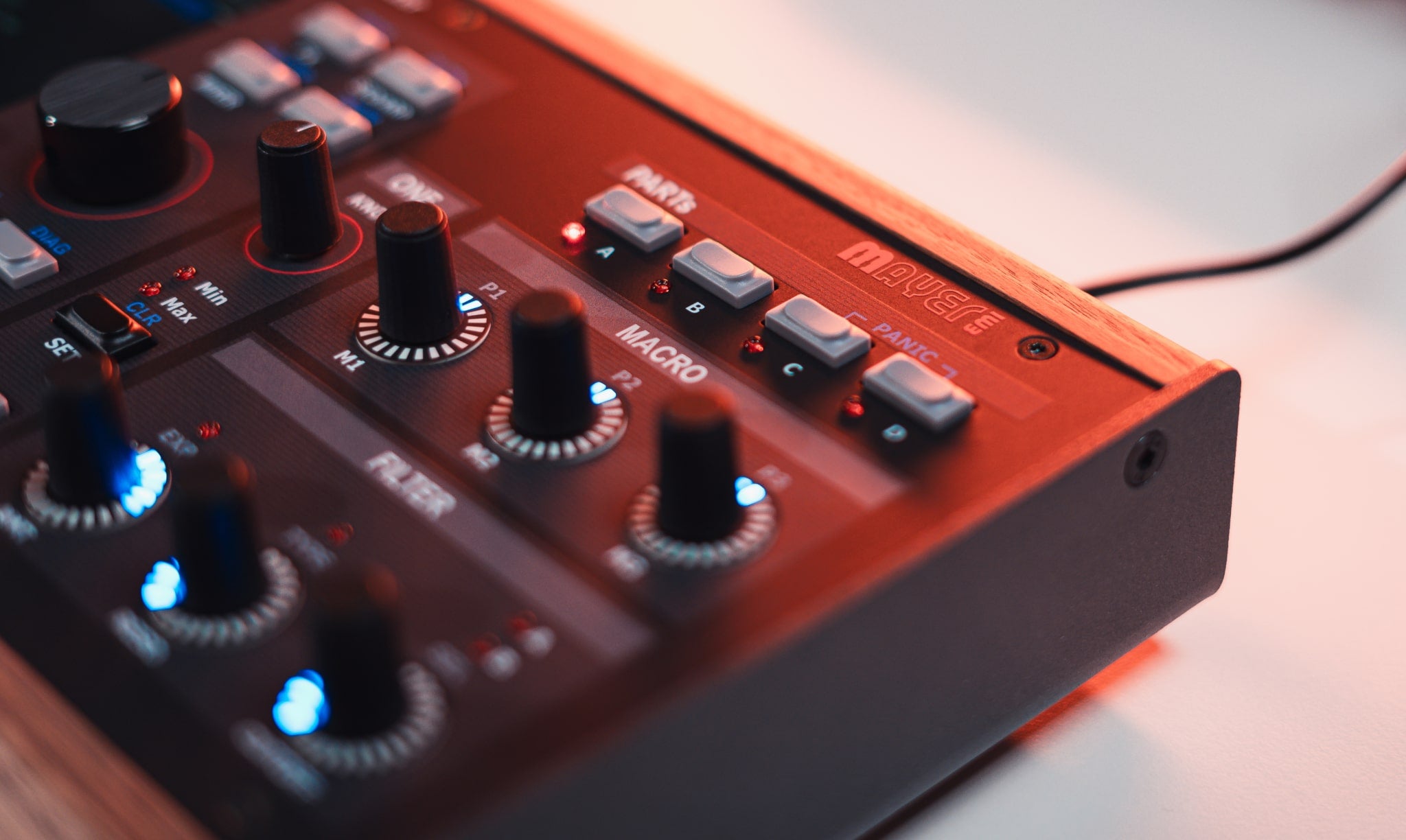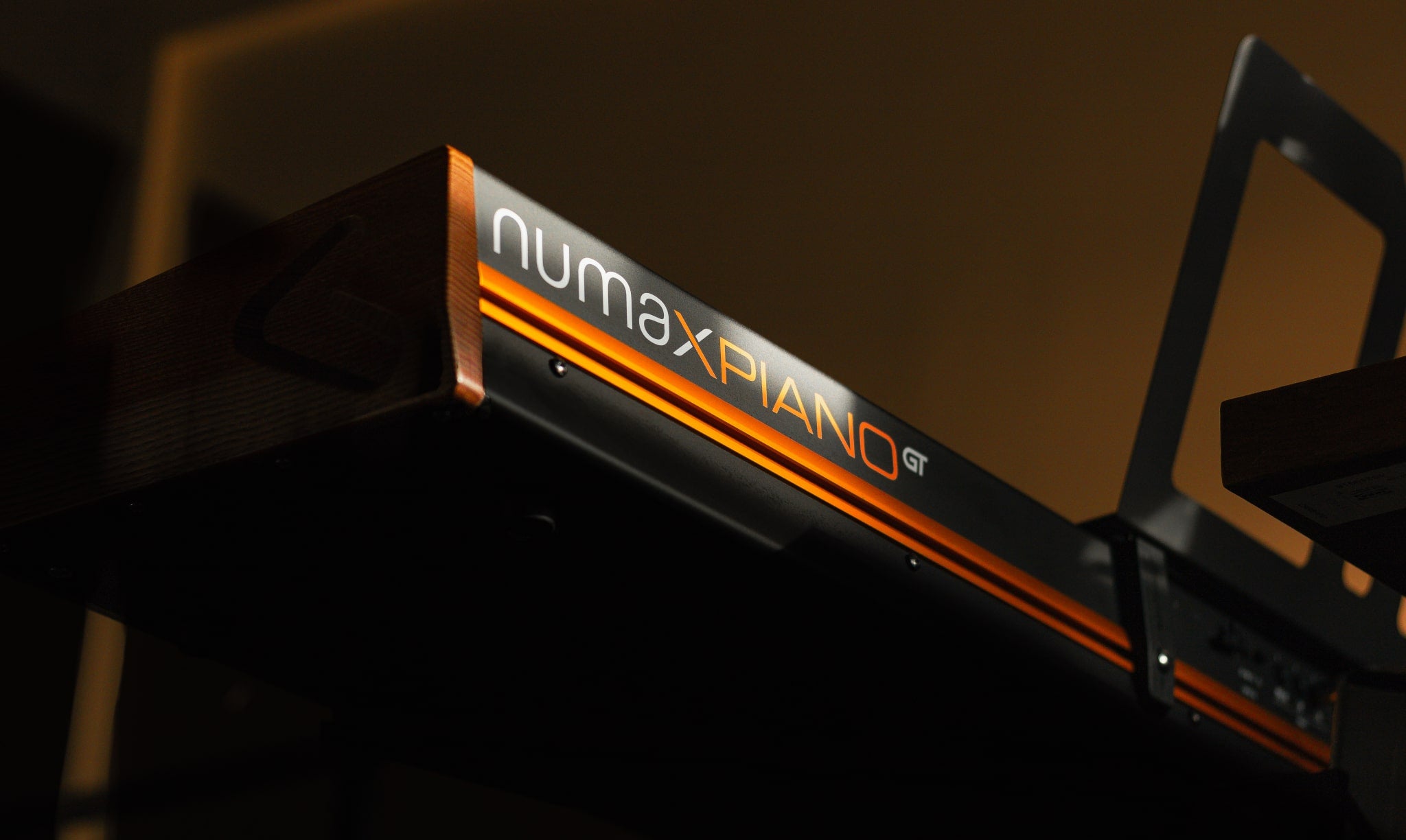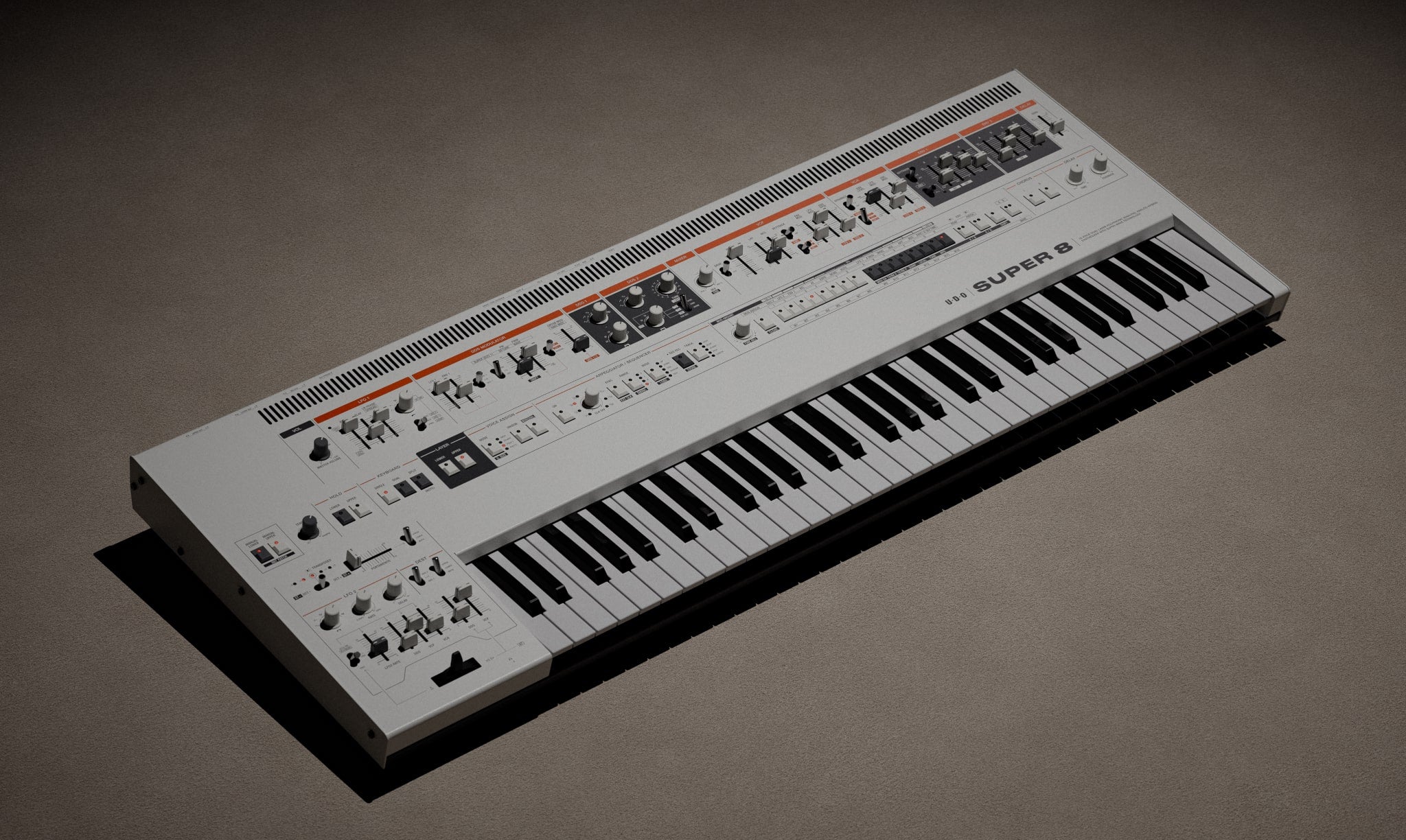The desktop Super 6 takes everything the Super 6 is famous for and reimagines it in a more compact and super-flexible package. It is VESA compatible for use with widely-available monitor arms/mounts, rack mountable with a 7U footprint, and comes complete with robust retractable feet for a more ergonomic experience in desktop use settings.
In Binaural mode, the Super 6 features a true stereo signal path in which the instrument’s twelve voices are twinned to form six stereo ‘super’ voices. Consequently, the left and right channels — and each of the player’s ears — are assigned their own complete synthesizer voice. Parameters for both channels of each super voice may be independently controlled, facilitating the player to create rich and unique stereo images.
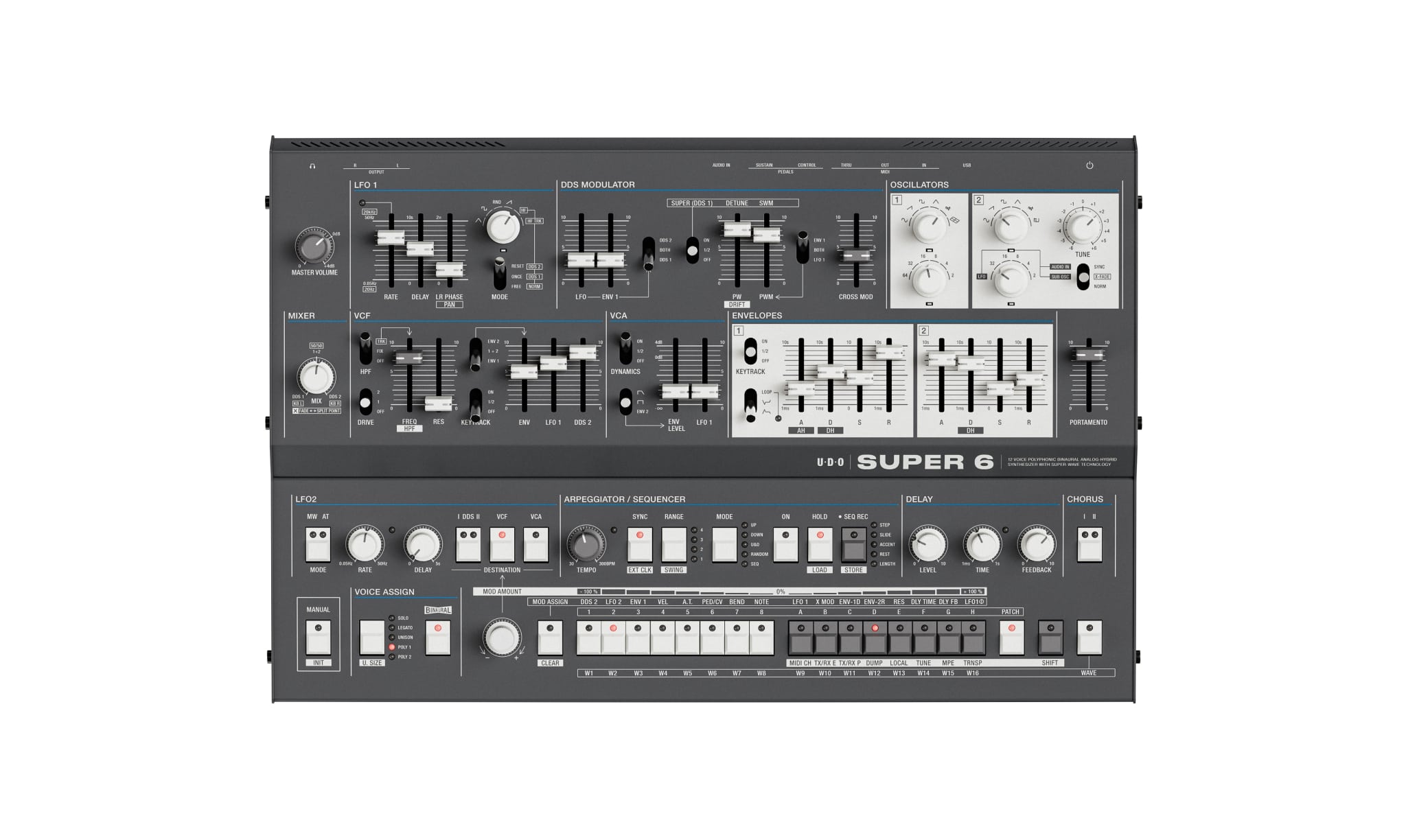
The Super 6 is a love-letter to the classic analogue synthesizer, brought firmly into the present with cutting-edge technology under the hood and a no-compromise approach to sound character, build quality and interface design. The rich sound that UDO has been championed for, paired with a robust, compact and inviting form factor with smooth, solid and responsive controls throughout, it cries out to be played.
Compact, flexible, and ergonomic
Offering the flexible and immediate control, gorgeous analog sound and unrivalled build quality of the Super 6, but in a more compact package. The Super 6 Desktop is a fully-featured Super 6 analog-hybrid 12 voice synthesizer, housed in a newly designed all-metal chassis. The Super 6 Desktop also includes ergonomic features such as VESA mount compliance, optional rack ears (7U) and robust flip up feet, as well as a huge 24-voice Super 6 polychain option.
Binaural analog signal path
In Binaural mode, the Super 6 features a true stereo signal path in which the instrument’s twelve voices are twinned to form six stereo ‘super’ voices. Consequently, the left and right channels — and each of the player’s ears — are assigned their own complete synthesizer voice. Parameters for both channels of each super voice may be independently controlled, facilitating the player to create rich and unique stereo images. The effect ranges from subtle to extreme stereo movement, creating an enhanced sense of spatial positioning relative to “conventional” monaural signal-chains panned at their output.
Massive modulation without menus
Enormous flexibility at the player's fingertips through simple controls and a carefully designed front-panel. Going deeper, there is an intuitive and immediate modulation system based around the performance area switches. For those who want to go further, every panel control can be targeted for modulation, all simultaneously and all with unique amounts.
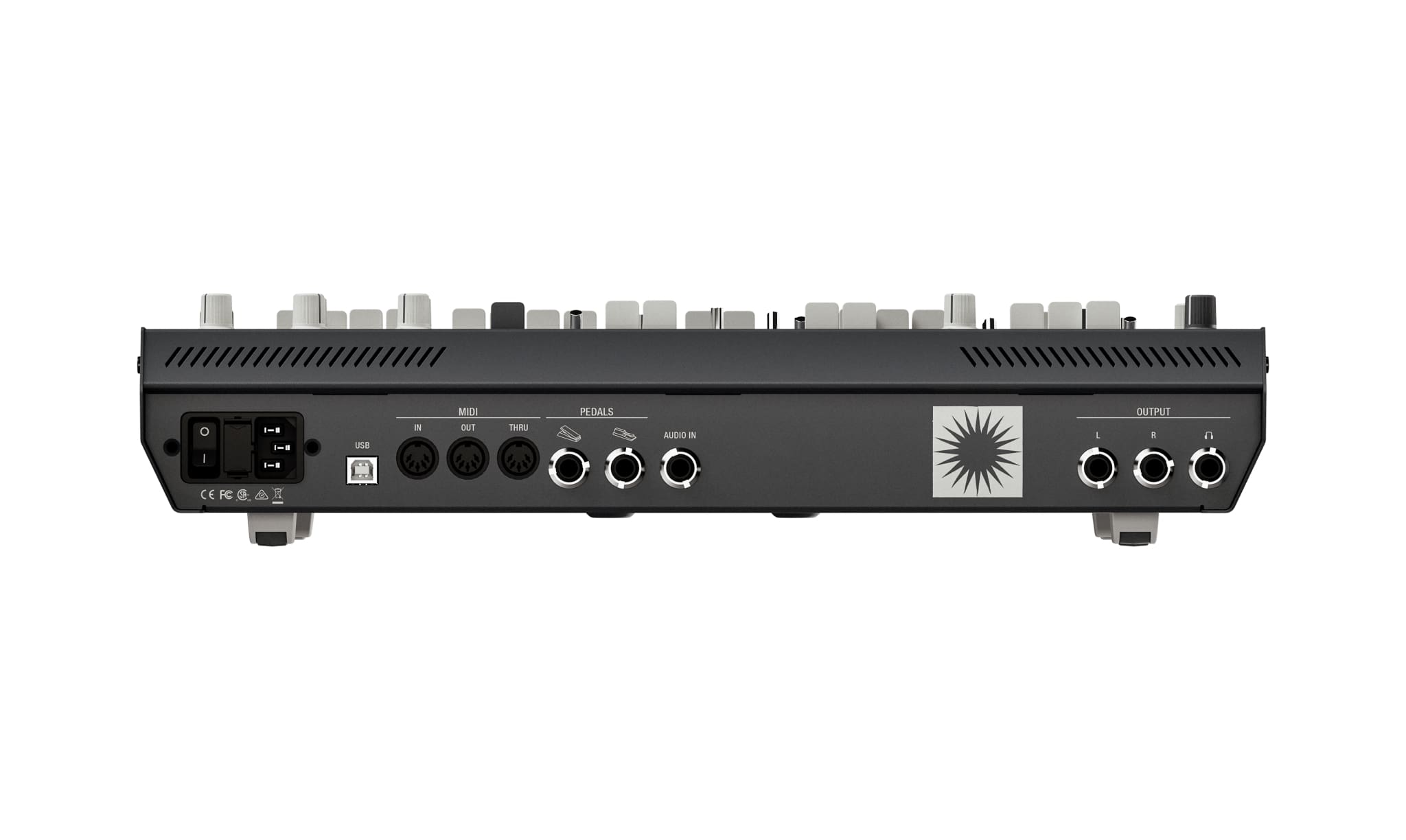
Analog voice architecture
Alongside an analog amplifier section, the Super 6’s main filter is an analog 4-pole, 24 dB per octave, resonant low-pass filter. It is preceded by a voltage controlled high-pass filter that can either be off, fixed, or can also track the low-pass filter cutoff for band-pass operation.
True no-compromise build quality
An instrument is cherished not just for the way it sounds but for the way it feels to play. We have worked tirelessly on the physical design to foster an immediate connection with the player. There has also been no expense spared on the build quality, with a rugged metal housing and solid control elements throughout.
DDS 1 (Oscillator 1)
- FPGA-based Super-wave oscillator core sampled at 50MHz with a centroid oscillator and six sister oscillators that can be dynamically de-phased in the stereo field
- Waveshapes: sine, sawtooth, square, triangle, noise and 16 user-downloadable alternative waveforms
- Normalized, single-cycle waveform with 4096 points
- 16-bit signed integer format samples
- Bandlimited at sampling frequency/8 (Nyquist/4). If 4096 Hz is your sampling frequency, then 512 Hz is the upper limit of your passband.
- Binary file with no header data and file extension .ws6
DDS 2 (Oscillator 2)
- FPGA-based algorithmic oscillator core sampled at 50MHz
- Waveshapes: sine, sawtooth, square, triangle, noise, pulse
- Can be hard-synced to DDS 1
- LFO mode
- Sub oscillator mode (can be activated when in LFO mode)
- Pulse waveform with variable pulse width and PWM
DDS Modulators
- LFO and envelope modulation of DDS 1 & DDS 2 pitch
- Selectable ½ Super or full Super mode for DDS 1
- Sister oscillator detune spread control for Super waves
- Pulse-width control for pulse waveform
- LFO and/or ENV 1 can modulate the sister oscillator detune spread for the Super waves and the pulse-width for the standard waves
- DDS 2 to DDS 1 cross-modulation for deep FM Sounds
Audio Input
- Stereo audio input that feeds through the VCA, VCF and effects section
- Gate triggering of envelopes and LFO 1 based on audio input level with a variable-gain input stage
LFO 1
- Main LFO with low and high-frequency modes, rate adjustable from 0.05 Hz to 20 kHz
- Left-right phase control for stereo effects, harnessing the binaural sound engine
- Can be free-running or reset on note press
- One-shot mode allows LFO 1 to act as an additional envelope
- Keyboard tracking mode for high-frequency LFO (useful for FM sounds)
- LFO 1 can be mapped through the DDS 1 or DDS 2 audio path in either fixed or tracking high-frequency modes for use as a drone or a third oscillator
- Can be synchronized with the sequencer and arpeggiator as well as an external clock
Mixer
- Adjusts the mix-level of DDS 1 and DDS 2 audio signals
- When in X-Fade mode, adjusts split point on the keyboard of crossfaded DDS 1 and DDS 2 (or audio input) signals
Voltage controlled filter
- The SSI2144 reprises the SSM2044 of legacy chipmaker Solid State Micro Technology, which many believe to be the best-sounding analog synthesis filter IC ever produced. Based on Dave Rossum’s patented classic improved ladder topology, the SSI2144 allows rich tonal characteristics that showcase the very best attributes of subtractive synthesis.
- Analogue 4-pole low pass self-resonant filter
- Two levels of overdrive
- High pass filter with fixed frequency or linked to low pass filter for a bandpass response
- Selectable keyboard tracking modes with filter autotune for accurate keyboard tracking
- Modulation by ENV 1 and/or ENV 2, LFO 1 and DDS 2
Voltage controlled amplifier
- Analogue VCA with selectable fixed or variable envelope (ENV 2) modulation
- LFO 1 modulation
- Dynamics control for selectable velocity sensitivity
ENV 1
- Invertible Hold-Attack-Decay-Sustain-Release, mappable through modulation matrix
- Looping mode with selectable keyboard tracking for use as an LFO or FM source
ENV 2
- Attack-Decay-Sustain-Release, multiple destinations
Keyboard and controller section
- Voice modes: Poly 1, Poly 2, Solo, Legato, variable size and type Unison
- Expression pedal and sustain pedal inputs
- MPE MIDI compliance with response to note on and off velocity, polyphonic aftertouch, polyphonic pitch bend and polyphonic expression
Modultion Matrix
- Intuitive modulation matrix with pre-defined destinations and also mapping to a wide range of front panel controls
- LEDs give clear feedback on mappings and modulation depths
- 20x audio-rate modulation computation
Arpeggiator/Sequencer
- MIDI-syncable, multi-mode arpeggiator with smart-hold
- MIDI-syncable 64-step sequencer with programmable note, rest, slide, accent and length tracks
- LFO 1 and delay controls can be locked to the arpeggiator/sequencer clock
- 16 rewritable memory locations for storing sequences
Effects
- Dual-mode stereo chorus using 24-bit 192 kHz processing
- Syncable and modulatable stereo delay with 24-bit 192 kHz processing
Performance
- 128 rewriteable patch memories with 64 factory patches and 64 empty slots for user patches
- Superior build quality, easy access buttons, sliders, knobs and a menu-free interface
IO Connections
- MIDI in, out and thru on DIN connectors
- USB IO for MIDI and patch, sequence and waveform management
- Audio input for stereo ¼” jack
- Main left and right outputs for unbalanced ¼” jacks
- High-quality stereo headphone power amplifier
Integration
- Easy file upload and download of patches, sequences and waveforms via simple USB ‘memory stick’ type interface with no extra drivers or applications required
- Easy OS upgrade over USB
Size and weight
- Dimensions (mm): 452l × 294w × 103h
- Weight: 5.5kg



